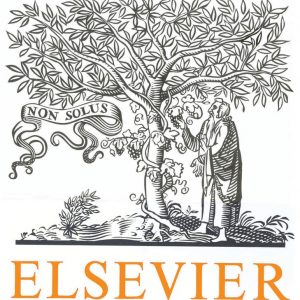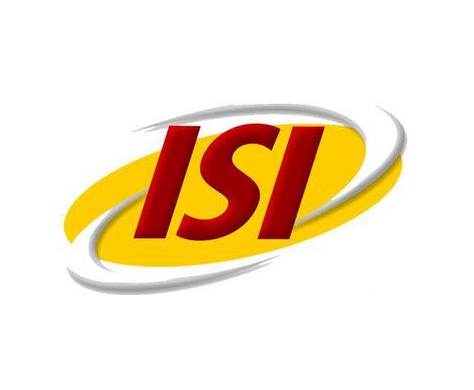دانلود رایگان مقاله لاتین استخراج اطلاعات کسب و کار از نمودارها از سایت الزویر
عنوان فارسی مقاله:
استخراج اطلاعات تجاری از نمودارها: آزمایش ردیابی چشم
عنوان انگلیسی مقاله:
Extracting business information from graphs: An eye tracking experiment
مقاله سال 2015

برای دانلود رایگان مقاله استخراج اطلاعات کسب و کار از نمودارها اینجا کلیک نمایید.
بخشی از مقاله انگلیسی:
2. Theoretical framework
The descriptive and normative research questions in the introduction are not new. Starting from the seminal work of Buswell (1935), this literature is exponentially growing during the last years with the quick development of big data methods and visualization software (Shixia, Weiwei, Yingcai, & Mengchen, 2014). However, most of these studies follow a computer science approach (Diehl, Beck, & Burch, 2010; Wang, Chou, Su, & Tsai, 2007) and do not focus on providing and analyzing empirical evidence on the underlying cognitive procedures or the effectiveness of alternative visualization frames for a proper understanding of the information in a graph. The literature presents two experimental approaches to deal with these research questions. The first one is the ‘black box’ approach.Under this approach, experimental subjects receive the same information in different visualization frames. Then, these studies measure and compare a series of indicators of the quality of the decision making (accuracy of the answer to a question, time required to make the decision, etc.) among different frames. Although most studies apply psychological experiments, where subjects do not receive economic incentives, Arribas, Comeig, Urbano, and Vila (2014) provide an interesting example of the application of an incentivized economic experiment. They present statistical information using numerical and graphical representations and assess the impact of such statistical formats on both the optimality of market decisions and the time required to complete decision making. Although the ‘black box’ approach allows for analyzing the effectiveness of alternative visualization frames, this approach does not provide information on subjects' scanning patterns: order, number of times, and during how long subjects actually look at each specific element of the statistical chart, etc. A good understanding of the underlying cognitive processes and the establishment of evidence-based normative guidelines to improve data visualization requires this type of information and the consideration of alternative approaches. A proposal for this alternative is data collection using eye-tracking tools, which are able to provide real-time information on where a subject is locating her or his eyes and allows for the identification of actual visualization patterns. Eye movements may seem very stochastic but are indicators of higher-level cognitive processes (Conati & Maclaren, 2008). An eye-tracking methodology helps uncover subtle cognitive processing stages that are otherwise difficult to observe in visualization evaluation studies. Although completion time and accuracy on specific tasks may indicate that differences or problems exist, a deeper understanding of visual scanning strategies on information graphics may help to determine specific guidelines for designing graphs and selecting graph types for particular datasets and tasks. An eye-tracking methodology can help to observe these visual scanning strategies, providing richer information beyond that available from response time and accuracy-based methodologies (Goldberg & Helfman, 2011). However, the price for the information that sophisticated non-intrusive eyetrackers provide is the impossibility of running experiments with large samples able to support reliable statistical inference. For instance, sample size is 32 subjects in Goldberg and Helfman (2011) or 38 subjects in Burch, Heinrich, Konevtsova, Hoferlin, and Weiskopf (2011). This tradeoff between information accuracy and sample size is not a specific issue of eye trackin, but is a common feature of all neuroeconomic experiments, where the complexity and time consumption in data collection usually limits data analysis to descriptive analysis, precluding the application of more sophisticated inference methods or statistical hypothesis testing. The literature presents several examples of the application of eyetracking methods to analyze graph-scanning strategies. For instance, Goldberg and Helfman (2011) present an illustrative eye-tracking study to compare how radial and linear graphs support value lookup tasks for both one and two data dimensions. This experiment presents linear and radial versions of bar, line, area, and scatter graphs to the participants, who complete each a counterbalanced series of tasks. Eye tracking also helps to classify error strategies and to support the establishment of improvement guidelines in the design of radial and linear graphs. As another example, Burch et al. (2011) apply eye tracking to identify visual exploration behaviors of participants solving a typical hierarchy exploration task by inspecting a static tree diagram. To uncover exploration strategies, they examine fixation points, duration, and saccades of participants' gaze trajectories. Huang (2013) highlights that graph esthetics usually come from common senses and personal intuitions—thus, their relevance to effectiveness is not clear—and conducts two eyetracking studies in an attempt to understand the underlying mechanism of edge crossings. These studies show that eye tracking is an effective method for gaining insights into how people read graphs and how the esthetics conditions human graph-reading behavior. However, the literature includes no previous examples in of the design and implementation of incentivized economic experiments with eye tracking: recording subjects' scanning strategy while they read basic statistical charts with information for a successful development of tasks with an economic incentive. The present study is a first attempt to fill this gap and get together the potentiality of eye-tracking methods with the reliability of incentivized economic experiments. To this end, experimental subjects observe simple horizontal bar charts with the information on the percentage of purchasers of ten movies. Then, participants answer a simple multiplechoice question (the percentage of sales of the fourth most purchased movie) using this information. The task has an economic incentive and those subjects who answer the question properly receive 2 euros. Graphs present the information in two different frames, defining the two treatments of the experiment. Treatment 1 does not provide the numeric value of sales percentage and this information only appears on the ax of the chart. Treatment 2 shows this numerical value beside the bars, making the information in the horizontal ax redundant. During graph reading, a non-intrusive eye tracker records subjects' scanning strategy. This type of eye tracker provided more accurate information (precise recording of eye movement almost at a pixel level) and has lower impact on the subjects. The structure of this study is as follows. This section summarizes the theoretical framework and Section 3 presents the economic experiment and the features of the eye tracker. Section 3 also describes the methodology used to analyze eye-tracking data, based on the definition of areas of interest and descriptive comparison of heat maps. Section 4 summarizes the results of the experiment and Section 5 presents a brief discussion of these results.
برای دانلود رایگان مقاله استخراج اطلاعات کسب و کار از نمودارها اینجا کلیک نمایید.
کلمات کلیدی:
Process-Aware Systems: Second International Workshop, PAS 2015, ...https://books.google.com/books?isbn=9811010196Jian Cao, Xiao Liu, Kaijun Ren - 2016 - ComputersThey are proposed either to rank existing business process models for similarity ... business process recommendation technique, using graph mining technique to extract ... It isn't necessary to provide extra information in our recommendation.Intelligent Systems and Applications: Proceedings of the ...https://books.google.com/books?isbn=1614994846W.C.-C. Chu, H.-C. Chao, S.J.-H. Yang - 2015 - ComputersIn response to the rapidly growing ecology of global asset information and the increasing ... Therefore, based on by the hierarchical asset graph model, the matching ... [5] O. Levina, O. Holschke, and J. Rake-Revelant, Extracting business logic ...Intelligent Information and Database Systems: 8th Asian Conference, ...https://books.google.com/books?isbn=3662493810Ngoc-Thanh Nguyen, Bogdan Trawiński, Hamido Fujita - 2016 - ComputersPutrycz, E., Kark, A.W.: Recovering business rules from legacy source code for system ... Shao, J., Pound, C.J.: Extracting business rules from information systems. ... GraphViz – Graph Vizualization Software. http://www.graphviz.org Dykstra, ...
